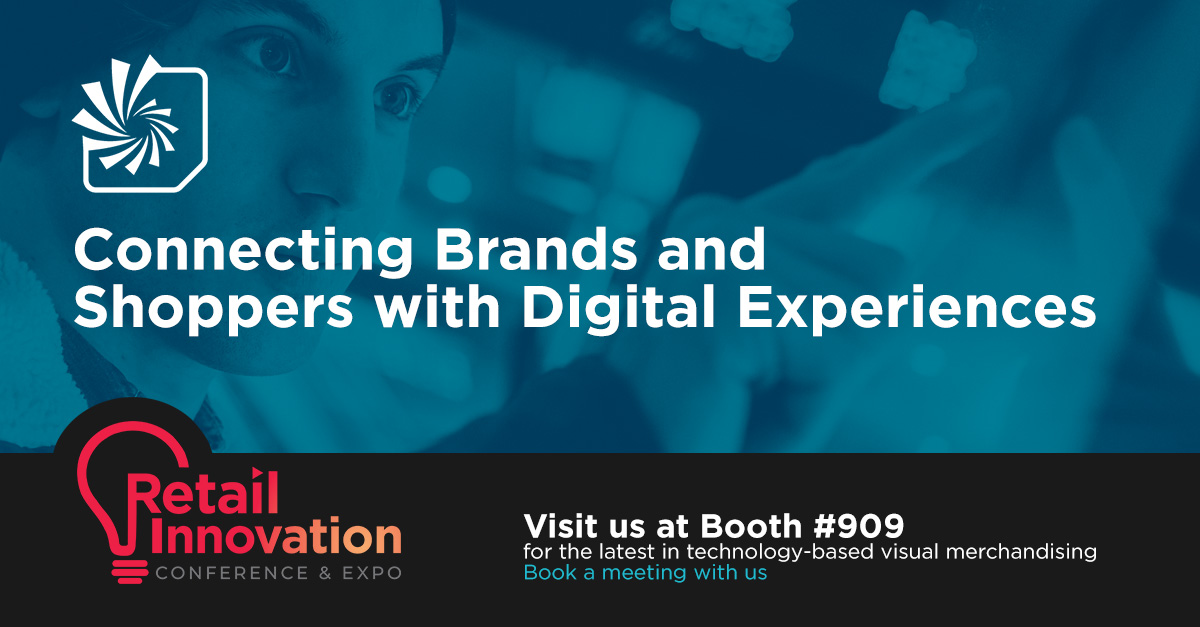How Gen Z Values are Shaping How We Live, Shop, and Consume
Individuality. Authenticity. Inclusivity.
These are just a few of the traits that describe Generation Z, the people aged 10 to 25 who were born between 1997 and 2012. With more than 68 million people in the U.S. who are members, Gen Z is on track to be the country’s largest consumer group, potentially spending more than $200 billion a year. With their purchasing influence, it’s important for brands and marketers to understand what Gen Z is all about.
Who are Generation Z?
As the most ethnic and racially diverse group in U.S. history, Gen Z represents the first time that white males are in the minority. This factor has a major effect on diversity, equity, and inclusion (DEI) initiatives and Gen Zers’ expectations on DEI.
As the first true digital natives, Gen Zers have never known a world without cell phones, the internet, Google, or social media. They move freely between the online and offline, without seeing a distinction between the two.
Because digital has been part of their world from the beginning, they expect technology and the digital world to provide convenience, accessibility, and opportunity—valuing experiences over ownership, opting for renting as opposed to buying a home, ride share services as opposed to buying a car, and subscription services for movies, music, food, and more. They want to take part in online learning and community hubs.
They’ve also grown up expecting to have ready access to, well, everything, expecting to be able to satisfy any desire or need—education, information, or entertainment—with just a few taps. And even as the first digital natives, Gen Z values their offline lives as much as their online ones and navigate freely between both worlds.
Beth Warren, Creative Realities senior vice president of marketing and a retail expert, hosted a recent webinar for AVIXA and chatted with Gen Z students from the University of Central Florida to learn more about what motivates this next generation of buyers. Here’s what they had to say.
Growing Up in a Digital World
Never knowing a world without digital applications, Gen Z is shaping the digital narrative. From the way commercial products are created and innovated to the way content is produced and presented, Gen Z has a major impact in every sector.
They also have clear-cut expectations of digital being a part of every aspect of their life.
The Value Equation - What is important to Gen Z
 This is an ambitious group of people and 80 percent are more driven than Millennials—people born between 1981 and 1996. Rather than work for a company, 72 percent consider themselves to be entrepreneurs and half would like to start their own businesses. Their mental and physical health plays a big role in these decisions, and they’re not willing to sacrifice that for the demands of a job.
This is an ambitious group of people and 80 percent are more driven than Millennials—people born between 1981 and 1996. Rather than work for a company, 72 percent consider themselves to be entrepreneurs and half would like to start their own businesses. Their mental and physical health plays a big role in these decisions, and they’re not willing to sacrifice that for the demands of a job.
Individuality is Sacred
While Gen Z may be a large demographic, they crave individuality. Growing up with social media, they haven’t felt the pressure to conform to societal expectations. Social media has enabled them to see other people they can relate to, and they realize they can be their true selves. The omnipresence of social media gives them validation of their feelings, likes, and dislikes.
"I use social media to brand myself,” said Naya Hawkins. “I feel it’s important to utilize those platforms to let others know who I am, what I stand by, what I don’t stand by, and what I’m going to pursue."
Authenticity Above Augmented
Gen Z craves authenticity in their personal, educational, professional, and shopping lives.
Authenticity carries over into how brands must present themselves to attract Gen Z. Traditional clothing brands with size 0 models may not fare as well as brands that are portrayed by models who look like their customers. Influencers with millions of followers will not carry the weight of a micro influencer with 10,000 to 20,000 followers. In addition to Gen Zers knowing influencers with large followings are getting paid to endorse a product, their celebrity status makes them unrelatable to most people in this group.
"In the age of social media, it’s easy to put up a façade of what your life is like,” said Kendra Rodriguez. “We like authenticity, so people feel they’re able to be themselves and not feel ashamed of it."
As the most racially diverse demographic, Gen Z does not view the world in terms of black and white. Instead, they crave inclusivity — across races, cultures, beliefs, and differences. While white people still make up 50 percent of Gen Z, Hispanics account for 25 percent of this group, more than any previous generation. Gen Z is further broken down by 14 percent Black, 6 percent Asian, and 5 percent other races. Close to one quarter—22 percent—of Gen Zers have at least one parent who is an immigrant.
Traditional brand messaging targeted predominantly to white men and women will not work for Gen Z, who expect messaging to reflect more accurately who they are.
Passionate about Helping Others
Gen Z is committed to helping others. They readily share their thoughts on review and ranking sites like Yelp and Google, as well as Instagram and other platforms. They want to help other people and believe they can do this by sharing their experiences about retailers, brands, and more.
It’s important for brands to realize this in their customer and client interactions because, whether it’s a positive or negative experience, Gen Zers will let others know about it.
Strive for Social Change
Members of Generation Z view themselves as activists. They won’t settle for the status quo and have become a major force for change in this country. The emphasis on Me-Too, Woke, Cancel Culture, and LGBTQI has been driven by Gen Z. They demand we do better as humans.
When shopping, Gen Z considers a brand’s impact on the environment and the world around them. They want to know where goods are sourced, if they were made in a sustainable way, if the company uses ethical practices, and the company’s impact on the planet.
Close to three-quarters of Gen Zers expect brands to be environmentally conscious, with 71.1 percent rating sustainability as an “important” or “very important” factor in their choices.
Brands that want to gain market share with Generation Z need to be aware of and accommodate these expectations.
Content Producers
Gen Z does not sit back and passively take in content. They serve the 95% 67% 62% dual roles of being digital consumers and active content producers. As previously mentioned, they regularly leave reviews. The top three social media channels for Gen Z are YouTube (95 percent), TikTok (67 percent), and Instagram (62 percent). On these platforms and others, they’re both content consumers and producers and like snackable content of 8 seconds or less.
With 70 percent of Gen Zers seeking user-generated content for discovering new products, brands will want to make it easy for them to interact and create their own content.
Connectivity and Interaction
For Gen Z, connectivity applies to their relationship with the digital world and their interactions with others.
Members of this digitally savvy group are masters of multiple screens, with 66 percent simultaneously using more than one internet-connected device. While they’re streaming a show on Netflix on their tablet, they may be chatting about it with their friends on another device.
Digital is also their way to stay connected. Most Gen Zers—73 percent—prefer to text or chat on their mobile devices as opposed to talking on the phone.
What resonates deeply with me is the ability to connect and have extensive opportunities no matter where I am,” said Hawkins. “During the pandemic, I know a lot of people felt limited, but I felt it was limitless. “
Evolving Digital Signage Strategies to Generation Z
To reach and be noticed by this large group of consumers, brands need to adapt their digital strategies. Here are seven ways to do that.
1. Allow for User-Generate Content
In all aspects, brands should make it easy for users to generate content for people to give a rating, leave a review, or post a video. This could also increase sales as positive reviews are shown to lift sales by 20 percent and justify a 10 percent higher price point.
2. Increase Usage of Artificial Intelligence
Brands should use AI to create environments that are open, aware, and responsive. From try-on apps for clothing, shoes, and glasses to creating algorithms to provide highly targeted messaging, AI can help brands increase their reach and engagement with Gen Z in a targeted and highly personalized way.
3. Integrate Social Messaging and Experiences
Brands should display user-generated content for other consumers to see. Gen Zers have a fear of missing out, so show them what other people are thinking, feeling, doing, and saying.
4. Tell Stories That Matter
What is your origin story? What steps is your company taking to combat climate change? To protect the environment? For social justice? These issues matter to Gen Z, and they’ll take your efforts into consideration when making purchasing decisions. An easy way to share these stories is by putting a QR code on your digital signage that links back to your website where you share this information.
5. Harness the Power of Influencers
Gen Z cares about what others think, and 87 percent of consumers of all ages rely on social to make decisions. Tap into the power of influencers, but, when bringing them into the fold to share your message, make sure it’s done in an authentic way. Use influencers who are sharing their passion instead of just pushing your product. Again, a QR code on your digital signage can link to influencer messaging.
6. Cultivate Community
Although Gen Zers crave their individuality, they also embrace belonging to a community. Use your digital signage to display your brand’s community. Take advantage of hashtags. Share imaging and videos of what your community is doing.
7. Find a Role for Mobile
With the amount of time Gen Zers spend on their mobile devices, incorporating a mobile strategy into your digital messaging is imperative. Integrate Gen Zers’ experience starting with their mobile device and advancing to your digital signage.
Capturing the Attention and Spending of Gen Z Requires a Robust Digital Signage Strategy
With Gen Z incorporating digital into every aspect of their lives, it’s imperative for brands to have robust digital strategies. That means creating robust in-store experiences that incorporate interactivity as well as ways to connect those experiences on tablet or mobile devices.
To attract the attention of Gen Z, brands need to be creative and innovative, thinking beyond just words on a screen.
“I like an immersive experience,” said Hawkins. “That draws my attention to a digital sign.”
As more Gen Zers come of age, brands will want to learn more about this dominant demographic, whose members crave individuality, authenticity, and inclusivity, and adapt their digital signage strategies to engage and interact with this large and powerful consumer group.
Gen Z is Shaping All of Us
The reality is that while Gen Z is its own distinct group, it’s preferences and habits are impacting all of us.
While Millennials and Generation X aren’t technically digital natives, much of their formative years were spent online or engaged with technology. They may not weave in and out of the digital and physical worlds with the same grace that members of Gen Z do, but they definitely live in both. And the more these older generations spend time around this younger generation, the more Gen Z is shaping how they interact with brands. You don’t have to look much past the rise of review sites to see how Gen Z’s demand for easy access to information is shaping the digital landscape.
It’s already critical that brands have strategies for how to engage with not just Gen Z shoppers, but shoppers of every generation. That’s only going to become truer in the coming years. We’ve created those strategies for our clients, helping them engage shoppers and entertain guests. We’d love to tell you more about how we did it and ways that we might be able to do it for you.
Data Sources
- “Is Your Digital Ecosystem Ready for Gen Z” AVIXA Power Hour Webinar / Beth Warren Facilitator, August 2022
- “A Guide to Forging Deeper Connections with Gen Z” LS | Lawrence & Schiller – 2022
- “Consumer Creators / Selling to Gen Z webinar hosted by PSFK – April 2022
- “True Gen: Generation Z and its implications for Companies McKinsey & Company – Dec 2020
- “Meet Generation Z: Shaping The Future of Shopping” McKinsey & Company – August 2020
- “The Young and The Restless: Generation Z in America” McKinsey & Company – March 2020
Share this
You May Also Like
These Related Stories

Why Retailers Need to Be Creating Memorable Guest Experiences and How To Do It

Creating Compelling Content: How To Avoid The Visual Noise

